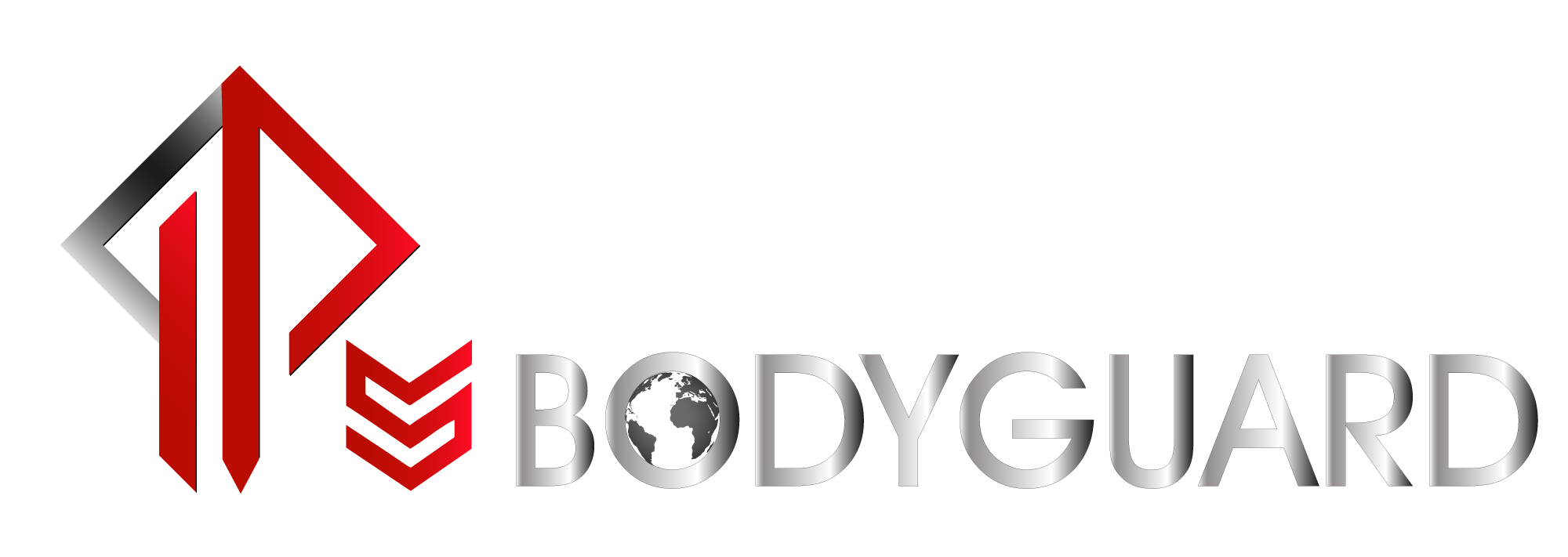
IPS BODYGUARD: security and safety conference
I. Introduction
Presentation of the security issues and why security is important
The introduction of a security conference should highlight the importance of security issues. Security is a crucial topic in our society, whether it be in terms of physical security, cybersecurity, or economic security. The issues related to security are multiple and vary depending on the context.
- First of all, security is essential to ensure the protection of people and property. Physical security helps to prevent accidents, thefts, assaults, acts of terrorism, or natural disasters. Cybersecurity, in turn, protects sensitive data, avoids cyberattacks, viruses and malware, and guarantees the confidentiality of information.
- Secondly, security is a major economic issue. Financial losses due to malicious acts, thefts, or fraud can be considerable for companies and individuals. Security is therefore a means of protecting financial assets and ensuring the sustainability of organizations.
- Finally, security is a social issue. Security problems have an impact on the quality of life of individuals and can affect their well-being. Populations living in high-risk areas are often victims of crime, violence, and insecurity. By ensuring security, it is possible to promote social development and improve the quality of life of citizens.
In short, security is a crucial issue in our society, which concerns both individuals and organizations. Security helps to protect people and property, preserve the economy, and ensure social well-being.
II. Security threats
The different forms of threats (physical, cyber, etc.)
There are many forms of threats that can endanger the security of people, property, organizations, or society as a whole. Here are some examples of common threats:
- Physical threats: This type of threat concerns direct attacks against people or property. Assaults, burglaries, acts of terrorism, road accidents, natural disasters, or fires are all physical threats.
- Cyber threats: These threats are related to cyberattacks, viruses, malware, and all kinds of cyberattacks. Hackers, data thieves, phishing, denial of service attacks (DDoS), and ransomware are examples of cyber threats.
- Financial threats: These threats concern fraud, theft, embezzlement, and hacking of bank accounts. Companies, banks, individuals, and governments are all concerned about this type of threat.
- Social threats: These threats concern the security of society as a whole. Crimes, violence, insecurity, radicalization, the rise of extremist groups, the spread of fake news and disinformation are examples of social threats.
- Environmental threats: These threats concern environmental damage, such as pollution, climate change, natural disasters, and nuclear risks.
It is important to understand that these different forms of threats can often be linked and interdependent. Cyberattacks can, for example, cause physical or financial damage, while social threats can have environmental consequences. It is therefore essential to understand the complexity of these threats and to adopt a comprehensive approach to ensure the security of all.
- The causes of threats (human errors, targeted attacks, etc.)
The causes of threats are numerous and complex. They can be related to social, economic, political, environmental, or technological factors. Here are some examples of common causes of threats:
- Conflicts: Armed conflicts, civil wars, political or religious tensions can lead to threats to the security of populations. Conflicts can also have repercussions on the environment, with risks of pollution, explosions, or leaks of toxic products.
- Poverty: Poverty can lead to threats to the security of populations, notably by favoring delinquency, crime, and...
- Climate change: Climate change can cause extreme weather phenomena such as storms, floods, or droughts, which can endanger populations and infrastructure.
- Technological advances: Technological advances can have positive effects, but they can also pose security threats, such as cyberattacks, hacking, data theft, and espionage.
- Conflicts of interest: Conflicts of interest can lead to security threats, including favoring corruption, fraud, and embezzlement of funds.
It is important to note that these different causes of threats can often be related and interdependent. Conflicts, for example, can be related to economic or environmental issues, while technological advances can have economic or social consequences. It is therefore essential to understand the complexity of these causes and adopt a global approach to prevent and manage threats.
- Examples of recent threats (cyberattacks, terrorism, etc.)
There have been many recent threats that have made the news and demonstrated the importance of security in our constantly evolving world. Here are some examples of recent threats:
- The Covid-19 pandemic: The Covid-19 pandemic has been one of the most significant threats in recent years, endangering the health of millions of people around the world. It has also had a major impact on the economy, social life, and security in general.
- Cyberattacks: Cyberattacks are becoming more common and sophisticated. In 2020, the cyberattack against SolarWinds was one of the largest, affecting thousands of companies and government organizations worldwide.
- Climate change: The effects of climate change have become increasingly visible, with events such as the wildfires in Australia, floods in Asia, and storms in the United States.
- Geopolitical tensions: Geopolitical tensions between major powers such as the United States, Russia, and China have created threats of armed conflicts, trade wars, and cyber attacks.
- Social movements: Social movements such as the Black Lives Matter movement, protests against pandemic-related restrictions, and environmental protests have also resulted in security threats such as riots, violence, and arrests.
These recent threats demonstrate the importance of security and the need to prepare for unexpected and often complex events. Governments, businesses, and citizens must work together to develop effective security strategies and respond to current and future threats.
III. Security Methods
- Different security methods (physical security, cybersecurity, etc.)
There are several security methods used to protect individuals, organizations, and infrastructures from threats. Here are some common examples of security methods:
- Physical security: Physical security involves protecting people and assets through material means such as barriers, doors, surveillance cameras, and alarm systems.
- Cybersecurity: Cybersecurity is used to protect data, networks, and computer systems from cyber-attacks. Cybersecurity methods include firewalls, antivirus software, multi-factor authentication, and penetration testing.
- Communications security: Communications security aims to protect data exchanges between individuals, organizations, and devices. Communications security methods include cryptography, encryption keys, and security protocols.
- Operational security: Operational security is used to protect the processes and procedures of businesses and organizations. Operational security methods include risk identification, vulnerability assessment, emergency planning, and staff training.
- Personal security: Personal security is used to protect individuals from physical threats such as violence, assaults, and terrorist attacks. Personal security methods include personal security devices such as personal alarms, self-defense, and crisis management training.
These different security methods are often used together to create a comprehensive and effective security system. Organizations and businesses must assess the specific risks and threats they face and choose appropriate security methods to prevent and manage them.
- Prevention techniques (threat detection, data protection, etc.)
Prevention techniques are methods aimed at preventing or reducing risks and threats beforehand. Here are some examples of prevention techniques:
- Risk identification: Risk identification is a technique used to determine events that are likely to occur and evaluate their severity. This technique enables organizations to plan accordingly, implement risk prevention and reduction measures.
- Surveillance: Surveillance is a technique used to detect threats before they become incidents. It can be used to monitor computer networks, suspicious behavior, or criminal activities.
- Training: Training is a prevention technique aimed at improving employees' skills and knowledge about security. It may include training on security procedures, self-defense techniques, or occupational risk prevention.
- Security barriers: Security barriers are physical and electronic systems used to prevent threats from reaching their targets. Examples of security barriers include gates, locking systems, surveillance devices, alarms, and fences.
- Vulnerability analysis: Vulnerability analysis involves identifying weaknesses in security systems and processes. This technique can help organizations improve the resilience of their systems and implement additional prevention measures to avoid security breaches.
- Emergency planning: Emergency planning involves procedures for effectively managing incidents in the event of a threat or attack. These plans may include evacuation procedures, communication plans, alert procedures, relief measures, and recovery procedures.
By combining these prevention techniques, organizations can improve their level of security and effectively protect themselves against threats. It is important to note that prevention is an ongoing task, and it is essential to regularly update prevention methods based on the evolving threat landscape.
- Response Measures in Crisis Situations (Emergency Plans, Crisis Management, etc.)
In times of crisis, it is essential to have effective response measures to minimize the damage caused by the incident. Here are some examples of response measures:
- Emergency plans: Emergency plans are documents that detail the procedures to be followed in times of crisis. These plans must be regularly updated and shared with all employees. Emergency plans can include evacuation procedures, communication plans, alert procedures, relief measures, and recovery procedures.
- Incident response teams: Incident response teams are groups of people trained to quickly and efficiently respond to incidents. These teams may include security officials, IT specialists, communication managers, and human resources representatives.
- Communication systems: Communication systems are tools that allow for quick and efficient communication in times of crisis. Examples of communication systems include radios, mobile phones, instant messaging systems, emails, and social networks.
- Emergency operations centers: Emergency operations centers are dedicated places for coordinating incident response. These centers may include meeting rooms, command centers, and control centers.
- Employee training: Employee training is an important way to prepare employees to respond in times of crisis. Employees should be trained in emergency procedures and communication systems so that they can react quickly and efficiently in case of an incident.
By combining these response measures, organizations can minimize the damage caused by incidents and restore normalcy as quickly as possible. It is important to note that emergency plans must be regularly tested and evaluated to ensure their effectiveness in times of crisis.
IV. Security Solutions
Security tools (surveillance systems, antivirus software, etc.)
Security tools are technologies and methods used to protect systems and data against potential threats. Here are some examples of security tools:
- Firewalls: Firewalls are security devices that block unauthorized network traffic by preventing inbound and outbound connections of certain applications or services.
- Antivirus software: Antivirus software is programs designed to detect, prevent, and remove viruses, Trojans, and other malware from computers.
- Encryption tools: Encryption tools are used to encrypt data to protect it against attacks by unauthorized persons. Encryption keys are required to decrypt the data.
- Intrusion detection systems: Intrusion detection systems are used to monitor activities on networks and systems and detect suspicious or malicious behavior.
- Identity and access management systems: Identity and access management systems control access to digital resources and confidential information using access credentials and permissions.
- Backup and data recovery: Backup and data recovery tools are used to protect data in case of loss or corruption. Regular backups enable data to be restored in case of system failure or physical damage.
- Security testing: Security testing is methods used to identify vulnerabilities and weaknesses in a system or application. These tests enable organizations to take measures to reduce risks and improve security.
By using these security tools, organizations can strengthen their security and minimize the risks of data loss or malicious attacks. It is important to note that security tools are only part of overall security. Organizations must also establish effective security policies and procedures and raise employee awareness of security.
- Security service providers (private security companies, security solution providers, etc.)
Security providers are companies that provide security services and solutions to help organizations protect their systems, data, and users against potential threats. Here are some examples of security providers:
- Private security companies: Private security companies provide physical and electronic security services for businesses and organizations, such as building surveillance, access management, video monitoring, event security, risk management, etc.
- Security solution providers: Security solution providers offer software, hardware, and services to help businesses protect their systems, data, and users. They provide solutions such as firewalls, antivirus, encryption, identity and access management, intrusion detection, data backup and recovery, etc.
- Security consultants: Security consultants help businesses assess security risks and develop effective security policies and procedures. They provide security consulting, security auditing, crisis management, security training, etc.
- Threat monitoring companies: Threat monitoring companies continuously monitor security threats and cybercriminal activities to help businesses prevent attacks and respond quickly in case of incidents.
- Security management service providers: Security management service providers offer security management services for businesses that do not have the necessary resources or expertise to manage their own security. These services include security monitoring, intrusion detection, incident management, vulnerability management, etc.
Security providers are important partners for businesses looking to strengthen their security. They can help businesses identify security risks, implement effective security policies and procedures, deploy appropriate security solutions, and manage security incidents. It is important to choose reliable and experienced security providers to ensure the organization's security.
- Security best practices (employee training, system updates, etc.)
Security best practices are measures that reduce security risks and protect systems, data, and users against potential threats. Here are some examples of security best practices:
- Employee training: Employee training is essential to raise users' awareness of security risks and teach them safe behaviors. Employees should be trained in password management, use of security equipment, detection of phishing attacks, etc.
- System updates: Regular system updates are an important measure to ensure the security of systems and data. Security updates fix known vulnerabilities and prevent potential attacks. Companies should ensure they install updates as soon as they are available.
- Use of antivirus and firewall: Antivirus software and firewalls are essential security tools to protect systems against viruses, malware, and hacker attacks. Companies should ensure they install and regularly update these tools.
- Access management: Access management is an important measure to protect data and systems against unauthorized access. Companies should ensure that only authorized users have access to sensitive data and critical systems.
- Use of network security: Companies should use secure networks to protect their data and systems against hacker attacks. Secure networks should be protected by firewalls, intrusion detection software, and monitoring tools.
- Regular data backup: Regular data backup is an important measure to ensure data recovery in case of system failure or data loss. Companies should ensure they regularly backup critical data.
- Physical access control: Physical access control is an important measure to protect buildings and equipment against unauthorized intrusions. Companies should ensure they install security equipment such as surveillance cameras, access control systems, etc.
In summary, security best practices are essential to protect systems, data, and users against potential threats. Businesses should implement these practices to reduce security risks and ensure the safety of their organization.
V. Conclusion
Future security challenges
Security is an important and complex issue that continues to evolve with the emergence of new technologies and threats. Here are some future security challenges that businesses and governments will have to face:
- Artificial intelligence: The rise of artificial intelligence (AI) is likely to significantly change the security landscape. Cybercriminals may use AI to launch sophisticated attacks, while businesses will need to implement AI-based security solutions to protect themselves.
- Security of connected objects: The Internet of Things (IoT) is rapidly developing, offering new possibilities for connectivity and convenience, but also creating new security risks. Connected objects can be vulnerable to attacks, and businesses will need to implement security measures to protect the data stored in them.
- Regulation: Governments are increasingly seeking to regulate data security, particularly with the implementation of GDPR in Europe. Companies must comply with these regulations, which can be difficult and costly.
- Ransomware attacks: Ransomware attacks, in which cybercriminals block access to a company's data and demand a ransom to release it, are becoming more frequent. Companies must be prepared to deal with these attacks by regularly backing up their data and implementing security measures to reduce risks.
- Supply chain security: Companies are increasingly working with third-party suppliers, which can create vulnerabilities in the supply chain. Companies must ensure that their suppliers adhere to the same security standards as they do.
- Identity and access management: Companies must manage a large number of identities and access, which can be difficult to manage and secure. Companies must implement effective identity and access management processes to reduce security risks.
- Security skills shortage: There is a shortage of qualified security professionals, which makes it difficult for companies to recruit and maintain effective security teams. Companies must seek ways to train and maintain their security teams to be prepared for future threats.
In summary, security is an ever-evolving issue that presents many challenges for businesses and governments. Technological advancements, regulation, sophisticated attacks, IoT security, identity and access management, security skills shortage, and supply chain security are all challenges that must be addressed in the years to come.
- Actions to strengthen security
To strengthen security, companies can take different actions, including the following examples:
- Assessing risks: Before implementing security measures, it is important to identify potential risks. Companies can conduct security assessments to determine the most significant threats and the most vulnerable areas.
- Employee training: Employees are often the weakest link in security. Companies must ensure that their employees are trained in good security practices, such as password management and recognizing phishing attempts.
- Updating systems: Security updates are essential to protect systems against known vulnerabilities. Companies must ensure that all their systems are up to date with the latest security patches.
- Backing up data: Regular data backups are essential to prevent data loss in the event of an attack. Companies must implement regular backup processes for all their data.
- Implementing security policies: Companies can implement security policies that define security standards for employees and third-party suppliers. These policies may include requirements for passwords, data encryption, and system access.
- Using security solutions: Companies can use security solutions, such as firewalls, antivirus, and intrusion detection solutions, to strengthen their security.
- Testing security: Companies can test their security measures regularly to identify weaknesses and improve them. Testing can include penetration testing, vulnerability scanning, and security audits.
- Collaborate with security providers: Companies can collaborate with security providers, such as private security firms or security solution providers, to enhance their security.
In summary, to enhance their security, companies can implement actions such as risk assessment, employee training, system updates, data backup, security policy implementation, use of security solutions, security testing, and collaboration with security providers.
This summary could be adapted based on the target audience and conference objectives.














